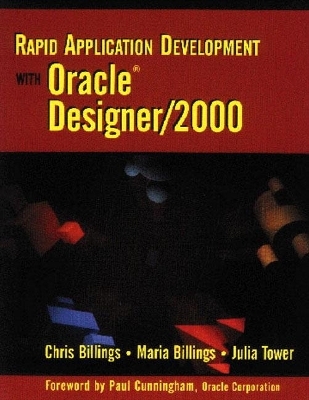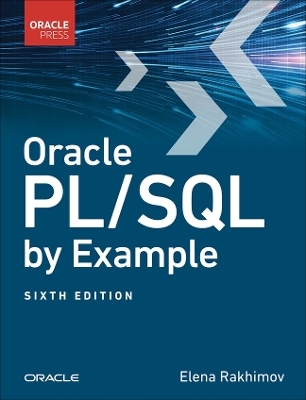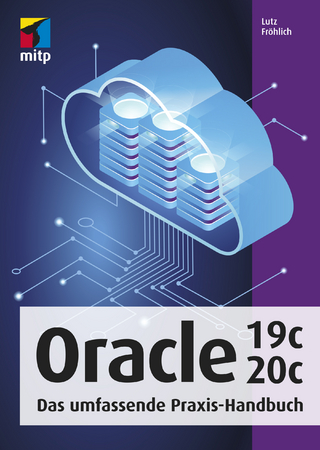
Rapid Application Development with Oracle Designer/2000
Addison Wesley (Verlag)
978-0-201-63444-0 (ISBN)
Oracle's Designer/2000 gives you powerful tools for information systems development, but its sophistication makes it very challenging to learn. In Rapid Application Development with OracleA (R) Designer/2000, the authors' "fast-path" approach puts Designer/2000 essentials into your hands quickly and shows how to make the most of the toolset in designing and implementing information systems that effectively serve your clients' needs. The book shows how to incorporate Designer/2000 into every phase of development, from interviewing business executives about their informational needs through implementing the final application. The book takes an example organization's development team through the planning, analysis, data design, and implementation of a sample Oracle7 database and an application built from Oracle Forms, Oracle Reports, and Visual Basic modules. In the process, it describes every Designer/2000 tool and demonstrates how to put each to work in real-world applications development.Specifically, you will learn how to apply such Designer/2000 tools as the Matrix Diagrammer, Entity-Relationship Diagrammer, Repository Object Navigator, Database Design Wizard, Module Structure Diagrammer, and more.
The book features extensive coverage of Designer/2000's flexible yet complex application generators, presenting the many capabilities and options of the Forms Generator, screen reports, and the Visual Basic Generator. Furthermore, you will find information on all the newest developments, including the WebServer Generator, the MS Help Generator, the Graphics Generator, and the C++ Object Layer Generator. For those who have little or no experience with Designer/2000, the book also includes a comprehensive overview providing a brief explanation of each Designer/2000 tool. 0201634449B04062001
Chris Billings is a founding member of Renaissance Computer Education and Consulting, a firm established to provide high-quality computer training and Oracle consulting. Chris Billings specializes in Oracle CASE tools as well as in 3GL languages and development environments. Maria Billings is a founding member of Renaissance Computer Education and Consulting, a firm established to provide high-quality computer training and Oracle consulting. Maria Billings served as an international trainer and consultant for Oracle Corporation. She has taught courses in Oracle RDBMS, CASE, and programming tools, as well as structured development techniques. Julia (Julie) Tower is a Principal Curriculum Consultant, working for Oracle's World Wide Education organization at Oracle Headquarters in Redwood Shores, California. She works closely with the Designer/2000 for Oracle's internal and customer training classes. Julie has trained Oracle personnel in more than 20 different countries. Her specialty area is application design and generation. 0201634449AB04062001
Foreword.
Preface.
1. Introduction.
Aims of This Book.
A Little Background.
Information Engineering Methodologies.
Rapid Application Development.
Process-led Development.
Design Recovery.
The Designer/2000 Toolset.
Technology Transfer via a Workshop.
2. Planning.
A CASE Study Scenario.
A Workshop Method.
Preparing for Our Workshop.
An Introduction to the Team.
Interviewing for Business "Direction" and Boundaries.
Interviewing for Business Process Information.
On Introductory Briefings.
In Interviewing.
How to Begin?
Our Directional Interviews.
Recording Strategy-level Information.
Access to Designer/2000 and Initial Set-up of an Application.
Diagramming Functions in the Function Hierarchy Diagrammer.
Diagramming Business Processes with the Process Modeller.
Using the Entity Relationship Diagrammer.
Ending Our Strategy Phase.
3. Analysis.
Preparing for a Detailed Look at the Business.
An Analysis Interview.
Details for the Data Model.
Function Details.
Reaching Elementary Functions and Avoiding Mechanisms.
On Normalization.
More Details.
Refining Entity Definitions.
Defining Attributes.
On Domains.
Unique Identifiers.
Business Units.
Using Dataflow Diagrams.
Cross-Checking with the Matrix Diagrammer.
Reports During Strategy and Analysis.
On Feedback Sessions.
4. Data Design and Implementation.
Preparing for the Design of a Relational Database.
Database Design with Super- and Sub-types.
Defining Database Objects in RON.
The Database Design Wizard.
Table Mappings with DDW.
Running the DDW.
Reviewing DDW Output.
The Data Diagrammer.
A Close Look at Column Definitions and Display Usages.
Column Validation and Derivation.
Constraints--Referential Integrity.
On Indexes.
QA Design Reports.
Creating a Relational Database with the Server Generator.
Implementing Reference Tables.
PL/SQL in the Repository.
So Where Are We?
5. Application Design and Implementation.
Steps of Application Design and Generation.
Refining Table and Column Definitions.
Creating a First-Cut Application Design.
Refining Module Definitions.
The Module Data Diagrammer.
Refining the Data Usages.
Preferences and the Preferences Navigator.
Templates.
Generating a Module.
A Word or Two About Generator Messages.
Conclusion.
6. The Forms Generator.
First, a Word about Preferences and the Forms Generator.
And a Bit More about Template Forms.
Determining the Structure of a Form.
Building in Functionality with Detailed Usages.
Adding Functionality with Constraints.
Adding WHERE Restrictions.
Generating Summaries and Counts.
Generating Derived Items.
Using SQL Expressions for Derived Data.
Using PL/SQL Functions for Derived Items.
Generating PL/SQL Button Items.
Controlling the Layout Position.
Handling Multirow Blocks.
Saving Space in a Block.
Single Area Feature.
Designing with Item Groups.
Implementing Valid Values with a Forms LOV.
GUI Implementation of Valid Values.
Foreign Key List of Values.
A Separate List of Values Form.
Defining and Implementing Online Help.
Calling Other Modules.
Generating Forms.
Generating Menus.
Features Available in Designer/2000 v1.3.
Conclusion.
7. The Reports Generator.
Generating a Screen as a Report.
Using the Copy Module Utility.
Overview of the Reports Generator.
SQL.
Plus Reports.
Layout.
Summaries and Derivations.
Generating Queries.
Restricting Data Returned in a Report.
Generating for Reports v2.5.
Some Reports v2.5 Terminology.
Layout.
Preferences.
Templates.
Parameters Revisited.
Break Reports.
Reports Calling Reports.
Module, Preference, or Template?
Conclusion.
8. The Visual Basic Generator.
Visual Basic Terminology.
Generation Overview.
VB Supporting Files.
Getting Started.
Usage Flags.
Foreign Keys and Lookups.
Zones and Zone Styles.
Controls.
Control Groups.
Stacking Frames.
Validation.
Domain Validation.
Derivation.
The Generate Dialog Box.
Running the Application.
Customizing the Application.
The Generated Project.
Including Multiple Forms in a Project.
Features Available in Designer/2000 v1.3.
Conclusion.
9. A Brief Tutorial.
Getting Started.
Entity Relationship Diagrammer.
The Function Hierarchy Diagrammer (FHD) and the RON.
Process Modeller.
The Dataflow Diagrammer.
Leaving the Dataflow Diagrammer.
Matrix Diagrammer and RON.
Database Design Wizard and RON.
Data Schema Diagrammer.
Database Generation.
Application Design Wizard (ADW).
Module Structure Diagrammer (MSD).
Module Data Diagrammer.
Oracle Forms Generator.
Oracle Reports Generator.
Optional: Preferences Navigator.
Optional: Implementing Menus.
Repository Reports.
A. New Generators.
The WebServer Generator.
MS Help Generator.
The Graphics Generator.
The C++ Object Layer Generator.
B. Using Designer/2000 to Re-engineer Legacy Systems.
Terminology.
Legacy System Types.
Workflow in Designer/2000.
Summary.
C. Bibliography.
Index. 0201634449T04062001
| Erscheint lt. Verlag | 25.11.1996 |
|---|---|
| Verlagsort | Boston |
| Sprache | englisch |
| Maße | 233 x 187 mm |
| Gewicht | 726 g |
| Themenwelt | Informatik ► Datenbanken ► Oracle |
| Mathematik / Informatik ► Informatik ► Software Entwicklung | |
| Informatik ► Weitere Themen ► Hardware | |
| ISBN-10 | 0-201-63444-9 / 0201634449 |
| ISBN-13 | 978-0-201-63444-0 / 9780201634440 |
| Zustand | Neuware |
| Haben Sie eine Frage zum Produkt? |
aus dem Bereich


